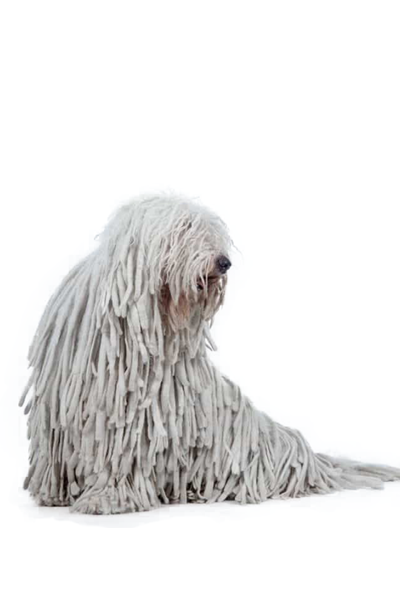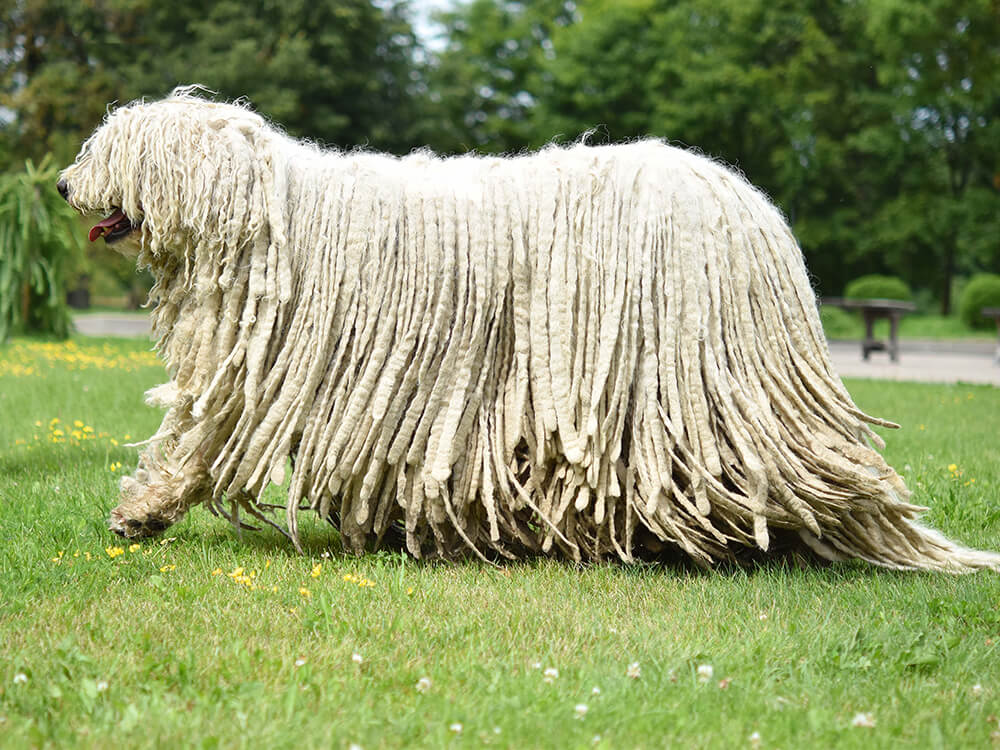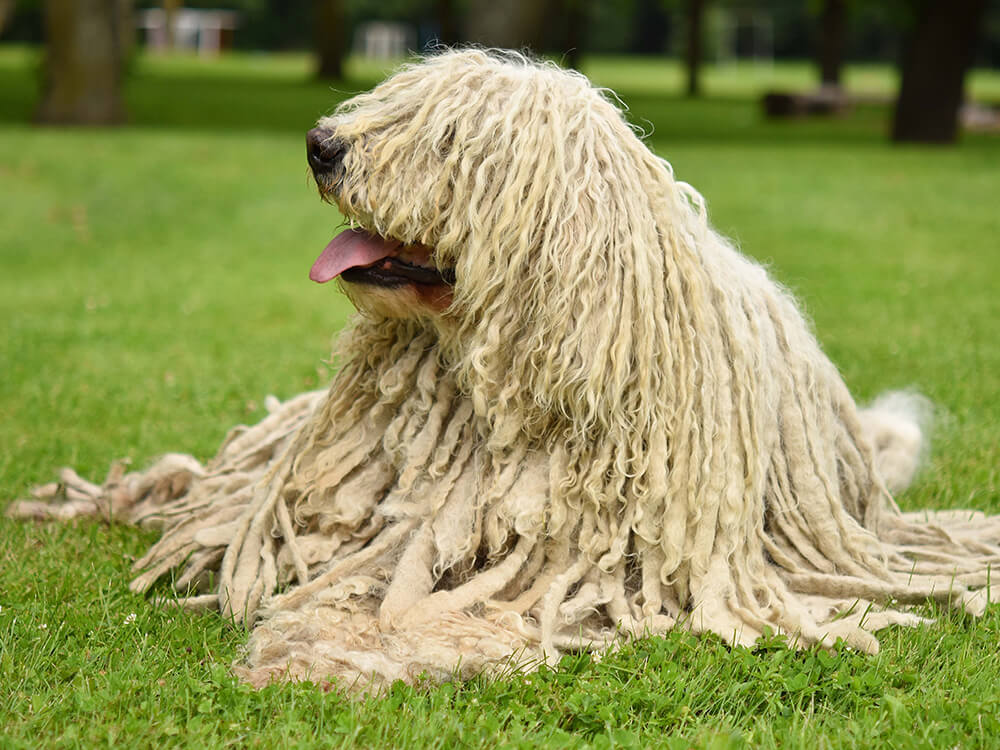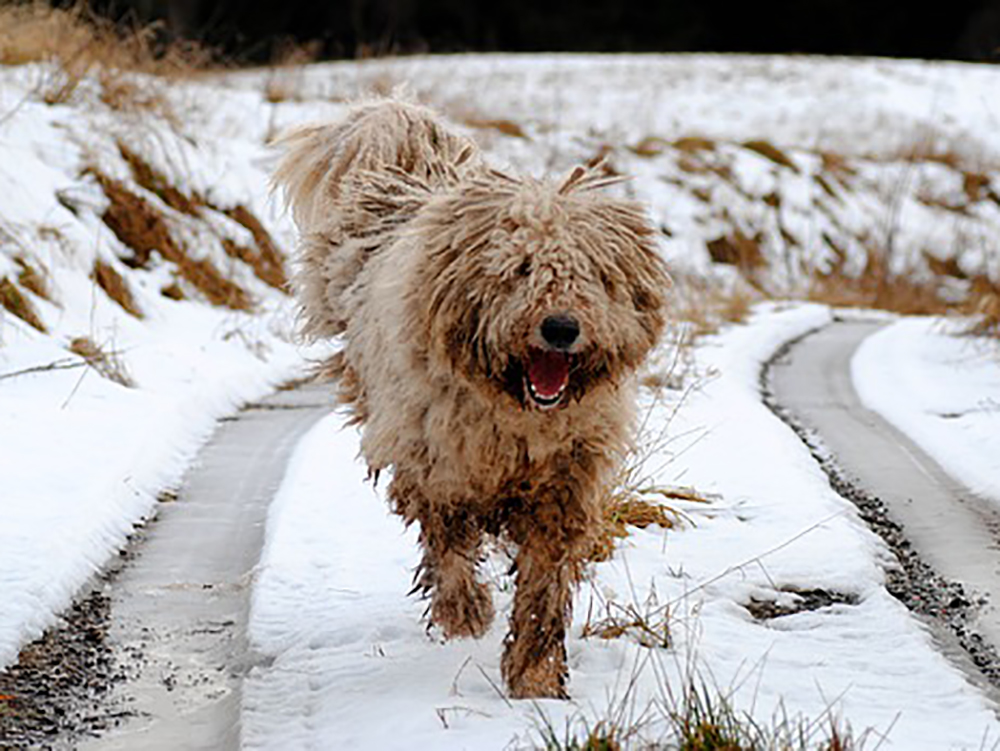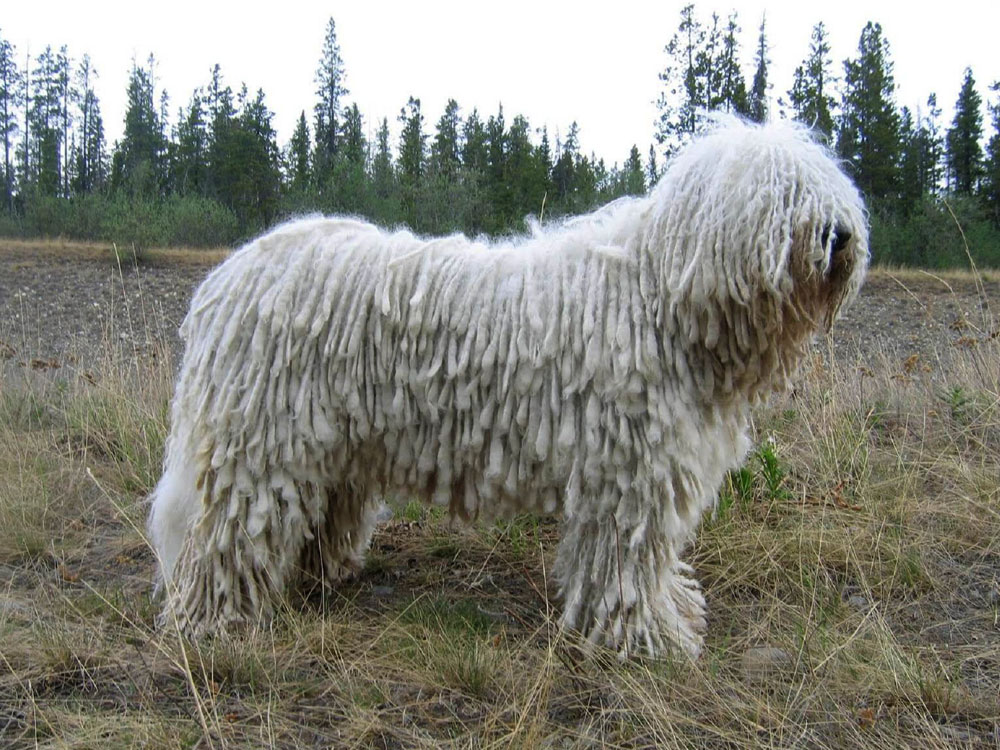
Komondor Breed Pictures
Vital Breed Stats
| Height: | 60 - 65 cm M | 60 - 65 cm F |
| Weight: | 55 - 59 kg M | 55 - 59 kg F |
| Breed Group: | Hound Dog Group |
| Life Expectancy: | 10 - 13 years |
| KC Registered: | No |
Breed Characteristics
| Size: |  |
| Grooming: |  |
| Exercise Level: |  |
| Trainability: |  |
| Barking Level: |  |
| Good with Children: |  |
| Good with other pets: |  |
| Affectionate: |  |
| Protective: |  |
| Cost to Keep: |  |
Give a thumbs up if you love the Komondor

0
More About the Breed
History
Breed experts believe that the Komondor descended from the Russian Owtcharki that the Magyars brought to Hungary. The earliest record of the breed dates back to the 16th century but others argue that it has been around before this time as a livestock guard dog. It is also said that it is related with the Puli and the Kuvasz. The Komondor became highly prized because it was able to guard large flocks against terrifying predators.
After the Second World War, the number of Komondors significantly dwindled that it almost became extinct. Breed enthusiasts were able to revive the breed but today, its numbers remain low worldwide, even in Hungary. It remains a valued guard dog for livestock and a loving companion to people in rural areas leading active and outdoor lives. It is registered with The Kennel Club under the Pastoral group.
Appearance
The Komondor is described as a large, powerfully built dog covered in a dense corded coat. Weighting 80 to 130 pounds and standing between 60 and 70 centimetres, it exudes an intimidating presence. It has a significantly big head compared to the rest of its body, which is shorter than wide, with a moderate stop. It has a black (sometimes dark brown or dark grey) nose that boasts of wide nostrils, medium dark eyes and U-shaped medium ears that hang down by its head. Its jaws are powerful with a perfect scissor bite, although pincer bite can be tolerated.
Its interesting mop-like appearance can be credited to its long and harsh topcoat that is either wavy or curly, paired with a soft undercoat. Long cords form as the hair grows, becoming much longer on its rump, loin and tail. Puppies have soft curls that gradually become cords as they mature. According to KC standards, the only accepted coat colour is white and underneath it is a grey or pink skin.
Grooming
Temperament
Intelligence
Komondors are not suitable for apartment living. It will thrive in rural areas with active and outdoorsy families. They aren’t really fond of children, although this is not to say that they despise them. They are better off in households with older kids, mature enough to interact with dogs. Parents need to teach kids that regardless of breed, dogs and other pets should be treated with love and respect. Owners also need to be cautious when their children’s friends are around as the Komondor usually does not know how to react around kids it does not already know. This breed is also not good around other dogs and small animals. It is better to avoid getting new pets inside the house.
The Komondor is intelligent but tends to be stubborn so training can be more challenging. It usually gets bored easily to training sessions must be interesting and quick. Positive reinforcements are highly effective and harsh correction or forceful training methods should not be considered.
Nutrition
- Senior and less active: up to 2,030 calories daily
- Typical adults: up to 2,290 calories daily
- Physically active/working dogs: up to 2,540 calories daily
Feeding
Health
Exercise
Cost of Ownership
Owning a Komondor is not necessarily easy because aside from its challenging temperament, it is rare in the UK. Interested individuals need to be on a waiting list and would have to shell out no less than £1,000 for a well-bred puppy.
Other expenses that potential owners need to save up for are other following:
- £250 for initial equipment to make the Komondor comfortable in your home. It will need a crate, bed, collar, leash, food and water bowls, and toys.
- £70 a month for food and treats.
- £25 to £80 a month for pet insurance, depending on the coverage you select.
- Up to £1,200 in a year for veterinary care, depending on the services, medications, and other factors.
Komondor Breed Highlights
- The Komondor is a challenging breed to raise, better off to owners with experience in raising stubborn dogs.
- It builds a strong bond with its owners and tends to be very protective of them.
- It has an adorable coat that is high maintenance.
- The breed suits people who lead active lifestyles.
- The Komondor is a high-energy dog that requires at least 60 minutes of exercise a day.
